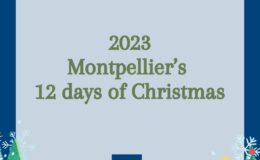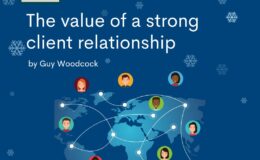Gold, or a ‘nugget of purest green’ – are the mathematicians taking over?
 Up until recently we were all networking. Now, we are ‘internetworking’.
Up until recently we were all networking. Now, we are ‘internetworking’.
A recent trip to Digital X 2019 in Cologne, and the opening speech from Deutsche Telekom’s CEO Tim Hoettges, got me thinking. He rightly pointed out that Millennials, Gen Y and Z are buying differently. They spot greenwashing a mile (or 1.60934 km) off and they want to buy into a sustainable product, from a sustainable supplier or service provider.
They also take on and cascade information differently and the expectations they demand in their consumer lives are heavily influencing how they work in the commercial world. And, these are the guys who are shaping our future. They are the future CEOs.
So, what has this got to do with maths?
Perhaps we need to delve a little further into the fake news phenomena, Russian ‘Troll Farms’ and Cambridge Analytica-gate to understand how audience engagement can be highjacked and sentiment skewed, and to better understand how maths is working behind the scenes. Unless, of course, you are Gen Y or Z because your extra sensory powers of perception mentioned above can, again, see transparency a mile (or 1.60934 km) off. And quite frankly, you’re not going to be fooled by a few mathematical algorithms. But you’ll accept you may have been ‘targeted’ if it’s legit and ‘bang on trend’ for you personally.
There are farmers too, who are always busy harvesting. The hot water that was paddled by Cambridge Analytica in 2018 saw the Facebook data of millions harvested without consent and then used for political means. While a couple of years earlier, it is alleged the Russians were doing something equally dark to influence support of Donald Trump, or more importantly, wage war against Hilary Clinton.
But harvesting of data is nothing new. What is new is the technical advancements used to do the harvesting in the world in which we now live. But we need to do it ethically and professionally, especially in this post GDPR era.
Are we alchemists?
We all tweet, repost, link, like, share and do our very best to engage with the right ‘community’ and liaise with the most influential digital commentators. That, we hope, is the alchemy we strive for to demonstrate to our clients that our in-depth social knowledge delivers gold, rather than a ‘nugget of purest green’1.
But that’s not strictly true, or how we ought to be doing things, right?
Right.
Unlike the Russian Internet Research Agency (IRA) – or Troll Farm as it’s been described – I’m not suggesting that 1,000s of fake accounts are set up in an Orwellian, 1984-style state to create fake blogs and social posts to get us to believe that day is night, and night is day. That’s a complex and highly dangerous (illegal when it comes to skewing sentiment to misinform domestic or international policy) route around social media’s very clever, and strict, algorithms.
But there is now increasingly a place at the table for professionals that dive deep into business intelligence, audience demographic, market auditing and sentiment harvesting or generation to work alongside the traditional bearers of the message.
And it’s why PR is shifting. We need to harness the skills of those that understand the maths and algorithms that lie behind to ensure our message is delivered at the right time, to the right people.
Up until recently we were all networking. Now, we are ‘internetworking’.
And what has this got to do with these pesky kids?
For years the world of PR has been filled by journalists and content writers. But the landscape has shifted over the past decade or so, and rightly too.
PR should be about being able to sit in front of a board of directors, or within a marketing team, or on a video conference with C-suite to listen to their ideas, and pains, and then stand up to offer strategic counsel and sketch out a campaign that aligns to commercial objectives. Tight, well drafted copy is still a must, but with diverse audiences and personas, and a digital landscape ahead, the young, savvy mathematicians should be embraced and their ideas, ideals and knowhow utilised.
I must admit, I still get a buzz out of seeing a client in a national newspaper, in print, even if it’s a NIB (news in brief).
But in an age where measurement is continually under the microscope, highlighted in this recent @YouGov report, ‘Honesty and social Media – A case of sharing without caring’, which examines the authenticity of social media and states: “We expect even our friends and family to use their profiles to paint a rosier picture than real life,” how can a NIB stand up against carefully (and legally) harvested (or engaged) data (or audiences) instantly receiving the right message at the right time?
Taylor Swift can wake up, tweet, “good morning, how is everyone today” and instantly, 85 million engaged and digital-content hungry fans say, “hello Taylor” back. How’s your NIB looking now?
This type of engagement is what our future leaders and current commercial influencers, the Millennials, Gen Y and Z are craving, and it’s what the mathematicians are serving up while ‘old skool’ PRs are slogging away trying to engage with a handful of print-ready baby boomers who are only interested in an exit strategy.
Alchemy, the ability to transform base metals such as lead, into noble metals such as gold, has evaded philosophers and scientists, and Percy from Blackadder, for hundreds of years. But we don’t need to be alchemists for our clients – we just need to use the right ingredients.
References:
1 – Lord Percy, Black Adder Series 2, ‘Money’, 1986

By Dean Enon
PR Director








